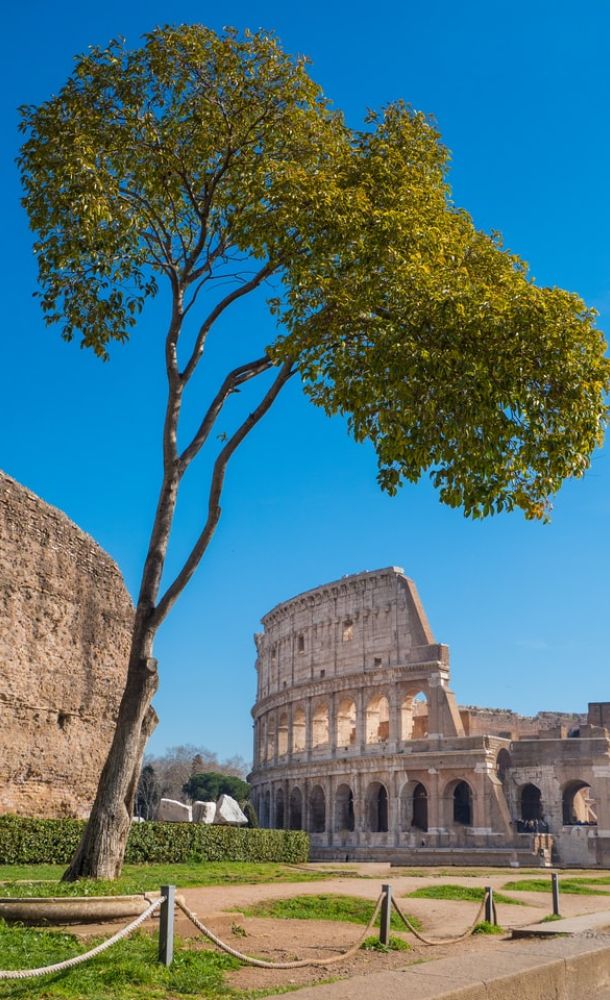Cosa viene in mente quando si pensa a Roma? Probabilmente ad alcuni viene in mente l’immagine del Papa che celebra la Santa Messa tra le mura della Città del Vaticano. Per altri, invece, è probabile che si vedano le immagini delle antiche rovine che abbondano nella città. Alcuni potrebbero pensar…
Scopri di più

Il cibo di Roma
Che si scelga di cenare in un ristorante di prima classe, in un’osteria o in una trattoria senza pretese, le ricette della cucina romana sono semplici ma il loro successo dipende dagli ingredienti …
Scopri di più
Il Colosseo a Roma
Circa 1920 anni fa, a Roma, fu costruito il più grande anfiteatro dell’antichità. Il Colosseo è considerato una meraviglia architettonica e ingegneristica, e i suoi resti rimangono una prova evidente della magnificenza e della crudeltà del mondo romano.Il Colosseo di Roma era originariamente conosciuto come Anfiteatro Flavio ed è il più grande del suo genere costruito durante l’Impero Romano. Era in grado di ospitare da cinquanta a sessantamila spettatori e veniva utilizzato come campo pe…
La città più visitata al mondo
Roma è uno dei luoghi più visitati al mondo. Questo non solo per la ricchezza delle sue origini, ma anche perché ci sono molte cose da vedere e da sperimentare. Ci sono fatti interessanti che possiamo imparare sull’antica Roma e sulla Città Eterna che è ora.Quanti di noi sanno che Roma è costruita su sette colli ed è abitata da più di 3000 anni? Questa città italiana ha una delle acque potabili più sicure al mondo. Infatti, le sue fontane di strada sono utilizzate dal pubblico come fonte …
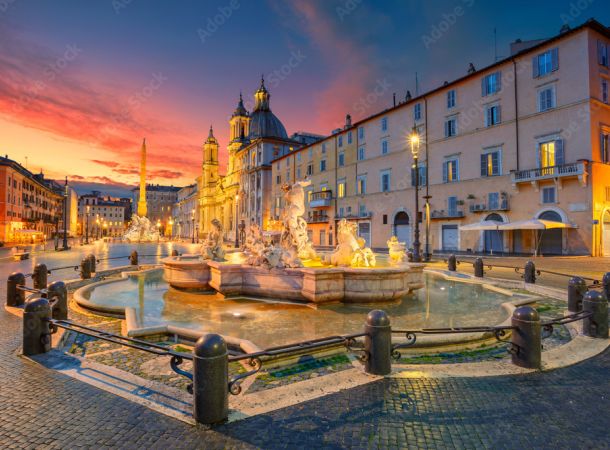
Piazza Navona
Situata nel cuore della città storica, vicino al Pantheon, Piazza Navona è una delle piazze più famose di Roma e la più grande. Piazza Navona è una tappa obbligata!Accesso: Situato nel cuore di Roma, è meglio arrivarci a piedi o in autobus, molte linee passano per Corso Vittorio Emmanuele II …
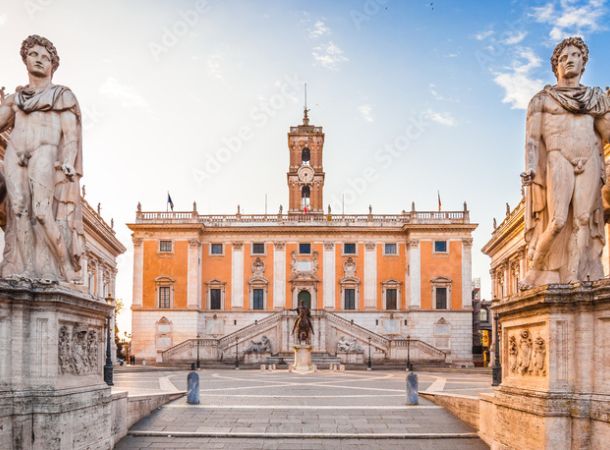
Piazza del Campidoglio
Situata su uno dei sette colli di Roma, la piazza del Campidoglio era il cuore religioso (tempio di Giove, Giunone e Minerva) e politico dell’antica Roma. Il ruolo politico della Piazza del Campidoglio è rimasto, diventando la sede del governo della città.L’aspetto attuale di questa magnifica…

Il clima di Roma
Come qualsiasi altra destinazione di vacanza, Roma ha periodi favorevoli per i viaggi e alcuni giorni meno favorevoli per le visite. Sebbene il clima a Roma sia generalmente mite durante tutto l’anno, ci sono comunque alcuni periodi dell’anno in cui è possibile ottenere il meglio dal proprio viag…

Ristoranti a Roma
Cercate i migliori ristoranti di Roma? Scegliere il migliore può essere un compito vertiginoso, dato che la città di Roma è ricca di centinaia di ottimi ristoranti. I ristoranti di Roma variano enormemente, da un palazzo gustativo di alto livello con uno chef tedesco, a una semplice pizzeria roma…
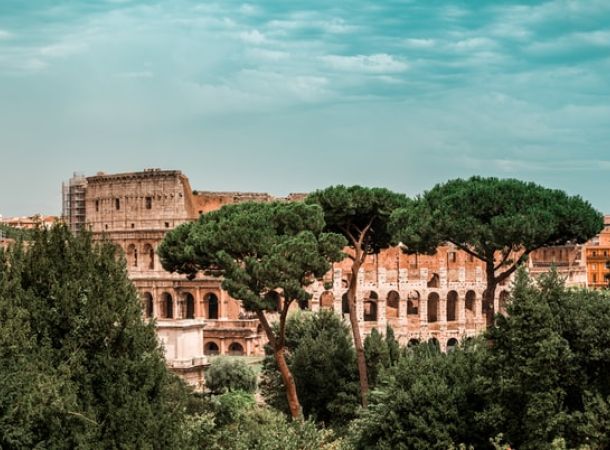
I pini di Roma
I pini di Roma non hanno nulla di speciale. Anzi, sono praticamente come tutti gli altri pini. Allora perché tanto clamore per i Pini di Roma? Se non siete abitanti della Città Eterna o se non siete musicisti incalliti, penserete sicuramente che sto reagendo in modo eccessivo a una certa specie a…
Le fontane di Roma
Anche se cercate in tutto il mondo, vi renderete conto che le fontane di Roma non sono solo dotate di una bellezza intricata, ma sono anche ricche di storia che catturerà i vostri interessi. È stato così fin dall’antichità, quando la città è stata soprannominata la città eterna, a proposito di quanto siano bravi gli abitanti del luogo quando si tratta di conservazione e manutenzione. Tutto è iniziato quando c’erano undici acquedotti che fornivano quante migliaia di litri d’acqua alla metropoli ogni giorno. Poiché ce n’era in abbondanza, si pensò a come renderla utile invece di sprecare ciò …

Civitavecchia
Comune e municipio della Provincia di Roma, Civitavecchia si trova a ottanta chilometri a ovest-nord-ovest di Roma, nella regione Lazio centrale. È un porto marittimo sul Mar Tirreno, al di là del …
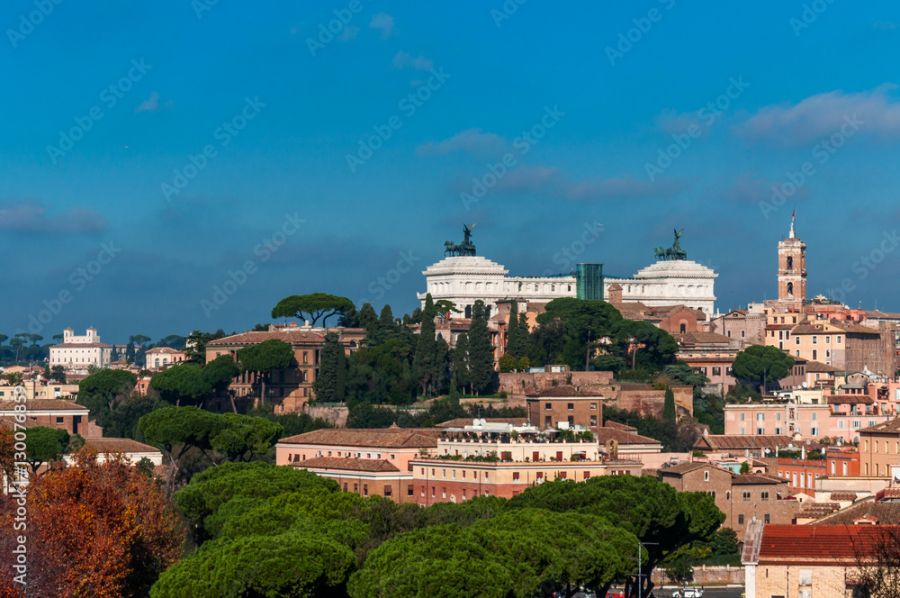
I sette colli di Roma
Si ritiene che i Sette Colli di Roma siano stati trovati dai due figli gemelli di Marte, Romolo e Remo, che finirono ai piedi del colle Palatino e diedero origine alla città. Gli altri sei colli so…

Luoghi famosi di Roma
Vi piacerebbe viaggiare indietro nel tempo e provare l’esperienza di cavalcare una biga tra antiche rovine e strutture architettoniche storiche? Se avete intenzione di vedere tutti i luoghi più fam…

Piazza di Spagna
Situata nel cuore della città storica, vicino alla Fontana di Trevi, Piazza di Spagna è una delle piazze più famose di Roma e offre una splendida vista. Luogo imperdibile, attira molte persone che …
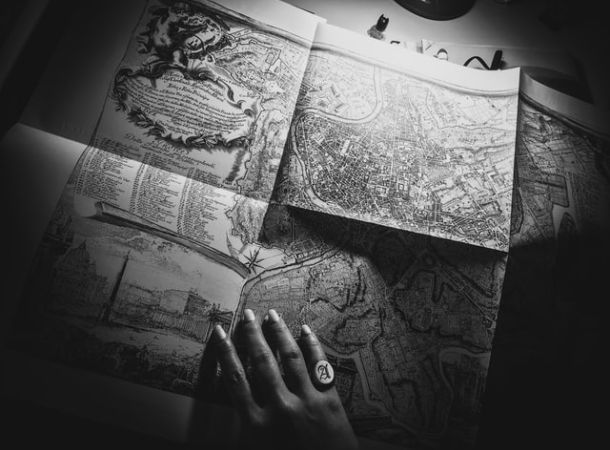
La geografia dell’antica Roma
La geografia dell’antica Roma fu per molti versi il fattore che contribuì al suo futuro successo, tanto che persino scrittori romani come Cicerone riconobbero quanto fosse stata fortunata la scelta…

Imperatori di Roma
I governanti di ogni Stato hanno sempre un ruolo importante quando si tratta del progresso nel suo complesso. Non è più una sorpresa che abbiano sempre uno spazio nelle pagine di un libro di storia…
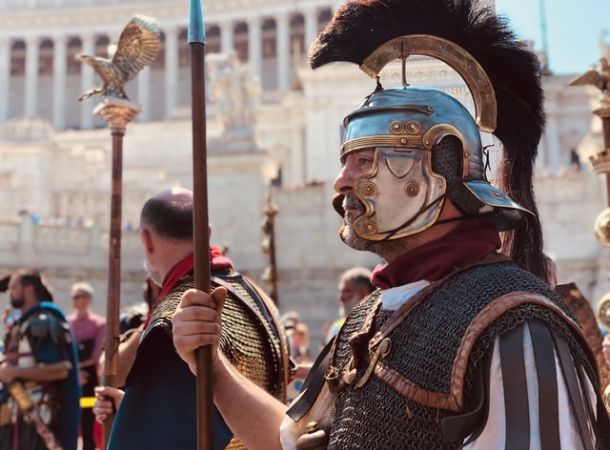
L’esercito nell’antica Roma
L’esercito dell’antica Roma è uno Stato militarizzato, il cui passato è stato spesso segnato dalla sua storia militare, ed è incentrato sul racconto delle grandi battaglie terrestri, dalla sconfitt…

Le donne nell’antica Roma
Cosa ci si aspettava che faceste se foste state una delle donne dell’antica Roma? Vi sarebbe stato permesso di seguire il vostro percorso professionale o vi sareste limitate a svolgere le faccende …





